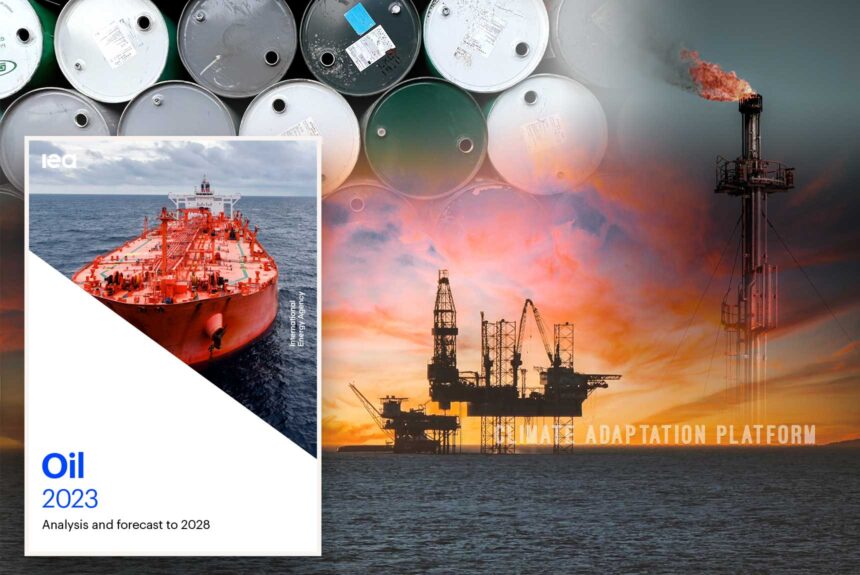The idea that the world will see a peak in oil production is not new.
The first person to advance the peak oil theory was Marion King Hubbert, an American geoscientist who presented a paper in 1956 during an American Petroleum Institute meeting. Hubbert predicted that global crude-oil production, assuming untapped reserves of 1.25 trillion barrels, would peak around 2000, decline after and eventually disappear in the 22nd century.
Hubbert’s peak oil theory only applies to the conventional oil sources that are easily accessible by traditional onshore and offshore wells and do not apply to unconventional oil sources like oil sands, oil shales, oil extracted from rocks through fracking and deepwater wells far offshores requiring significant investments and labour.
While Hubbert’s theory of peak oil turns out accurate in the US, as 1970 proved to be the peak for oil-well production at around 9.64 million barrels of crude oil per day, compared to 2012 when it dropped to around 6.4 million, globally his peak oil theory remains controversial, with the new oil reserves discovered in the Arctic, South America, and Sub-Saharan Africa.
Technological advancements in extraction and exploration could also improve productivity.
Calculating future global oil production remains tricky as this relies on data on past production figures and accurate data on current reserves. The challenge is that oil producers, particularly in Saudi Arabia, tend to keep these figures confidential (O’Leary, n.d.).
While knowing the exact amount of future oil production from conventional and unconventional sources remains a guessing game. And even if the oil supply continues well into the future, the peak for global oil demand is in sight, according to the IEA 2023 medium-term analysis published on 14 June.
The IEA forecast that the world will likely peak in oil demand in 2028 or soon after. The agency states that the peak in oil demand is due primarily to the popularity of electric vehicles. At the same time, demand for oil for road transport will decline starting after 2026 as cars become more fuel-efficient and biofuel blending becomes common.
The agency predicts that global oil demand under the current market and policy will increase by 6% from 2022 to hit 105.7 million barrels per day in 2028, primarily from the petrochemical and aviation sectors. However, the yearly demand growth will diminish from 2.4 million barrels per day in 2023 to 400,000 barrels per day in 2028, and after 2028, annual demand growth will decline.
“The shift to a clean energy economy is picking up pace, with a peak in global oil demand in sight before the end of this decade as electric vehicles, energy efficiency and other technologies advance,” IEA Executive Director Fatih Birol said in a statement.
“Oil producers need to pay careful attention to the gathering pace of change and calibrate their investment decisions to ensure an orderly transition”, he adds.
The report notes that the invasion of Russia in Ukraine that triggered a global energy crisis has also helped accelerate the deployment of clean energy technologies.
Demand for oil from combustible fossil fuels, excluding biofuels, petrochemical feedstocks and other non-energy uses, will peak at 81.6 mb/d in 2028.
Demand growth is set to reverse for gasoline after 2023 and overall transport fuels after 2026, resulting from a shift towards lower-emissions sources and policy emphasis on energy efficiency improvements and the rapid growth in electric vehicle (EV) sales, the report says.
Even China’s demand is projected to decline from 2024 onwards, following a bounce back in consumption which will peak in mid-2023 after the country eases its stringent Covid-19 restrictions at the end of 2022.
The report also projects that a bulk of oil demand will come from faster-growing economies, especially in Asia, at three-quarters of the increase between 2022 to 2028. India will surpass China’s demand by 2027 as its source of growth.
In contrast, oil demand in North America and Europe will contract due to energy transition policies and efficiency gains.
The report, however, continues to raise concern over the continued upstream investment in oil and gas, which it predicts to reach its highest since 2015, growing year-on-year to $528 billion in 2023 will cover the demand over the forecast period of 2028 and “exceeds the amount that would be needed in a world that gets on track for net zero remissions” (Growth in global, 2023).
Source:
O’Leary, C. (n.d.). Peak oil theory. Britannica. Retrieved from https://www.britannica.com/topic/peak-oil-theory
Oil 2023 Analysis and Forecast to 2028. (2023 June). International Energy Agency. Retrieved from https://iea.blob.core.windows.net/assets/cc7fd38f-3d68-4796-a958-8dfa3f3ef4a6/Oil2023.pdf
Growth in global oil demand is set to slow significantly by 2028. (2023 June 14). IEA. Retrieved from https://www.iea.org/news/growth-in-global-oil-demand-is-set-to-slow-significantly-by-2028



Leave a Reply